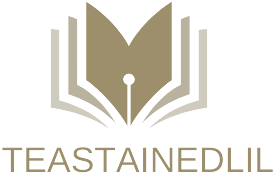Table of Contents
ToggleIn a world where efficiency reigns supreme, businesses are always on the lookout for innovative tools to streamline their processes. Enter ChatGPT, the AI powerhouse that’s ready to transform how organizations handle their ERP systems. Imagine having a savvy assistant who never sleeps, always ready to tackle your queries and optimize your workflows. Sounds like a dream, right?
Overview of ERP Systems
Enterprise Resource Planning (ERP) systems integrate various business processes into a single framework. These systems allow organizations to manage and automate core functions, including finance, human resources, supply chain, and customer relationship management. A streamlined ERP enhances data accuracy and improves operational efficiency, enabling better decision-making.
Organizations implementing ERP solutions often see improvements in productivity and reduced operational costs. Integration of all departments into one platform creates a unified approach to data management. Real-time reporting features enable businesses to access current information at any time, increasing responsiveness to market changes.
Many ERP systems offer customizable features to cater to the unique requirements of different industries. This adaptability allows businesses to align ERP functionalities with their specific strategies. Some popular ERP solutions include SAP, Oracle, and Microsoft Dynamics, each providing distinct advantages depending on organizational needs.
Utilizing ChatGPT with an ERP system enhances user experience further. It facilitates quick access to information and assists employees with routine queries, promoting efficiency. With natural language processing capabilities, ChatGPT interprets user requests effortlessly, making it a valuable companion in managing enterprise operations.
In summation, ERP systems play a critical role in modern business management. By integrating various functions into a single system, enterprises can achieve higher productivity, respond swiftly to challenges, and drive growth. ChatGPT serves as a supportive resource within this framework, improving both user interaction and operational effectiveness.
Understanding ChatGPT

ChatGPT represents a breakthrough in artificial intelligence technology, designed to assist users through conversational interactions. This powerful AI tool enhances various business tasks, particularly in enterprise resource planning.
What Is ChatGPT?
ChatGPT is an advanced language model developed by OpenAI that uses deep learning techniques to generate human-like text. It processes input prompts to provide relevant and accurate responses, supporting a wide range of applications. Organizations often use ChatGPT to automate customer service, create content, and streamline communication. Leveraging this technology enables businesses to improve operational efficiency and user satisfaction.
How ChatGPT Works
ChatGPT functions by utilizing a transformer architecture that allows it to comprehend and generate language contextually. Input queries undergo analysis, enabling the AI to produce coherent and contextually relevant replies. Notably, the model is trained on vast datasets, enhancing its understanding of diverse topics. This adaptability makes ChatGPT effective in answering FAQs, assisting employees, and integrating seamlessly with ERP systems. By understanding user intent, it delivers precise information quickly, thereby improving overall productivity.
Integrating ChatGPT with ERP
Integrating ChatGPT with ERP systems offers significant advantages for businesses navigating complex workflows. Enhanced user interaction leads to faster decision-making and improved efficiency.
Benefits of Using ChatGPT in ERP
Incorporating ChatGPT into ERP solutions delivers immediate access to real-time data. Users receive timely responses to inquiries, freeing up employees’ time for more strategic tasks. Increased accuracy arises as ChatGPT minimizes human errors during information retrieval. Furthermore, a seamless integration reduces training time and learning curves, promoting employee adoption of company resources. Cost savings materialize through optimized processes, which ultimately contributes to enhanced productivity.
Common Use Cases
ChatGPT effectively facilitates routine tasks within ERP systems. Employees can query inventory levels or sales reports without navigating complex menus. Decision-makers benefit from streamlined access to critical insights during meetings. Additionally, integrating ChatGPT allows for efficient onboarding processes, answering new employees’ questions in real-time. Customer service departments utilize it to manage frequently asked questions, ensuring consistent support across the organization. This technology enhances communication between departments, bridging gaps that may exist in traditional workflows.
Implementation Strategies
Implementing ChatGPT into an ERP system requires a systematic approach. Each step focuses on maximizing the efficiency of both systems while enhancing user experience.
Steps to Integrate ChatGPT into ERP
- Identify specific use cases for ChatGPT, such as data retrieval or query handling.
- Assess existing ERP capabilities, confirming whether API integrations are supported.
- Develop a clear integration plan, outlining timelines and responsibilities.
- Test interactions to ensure ChatGPT accurately responds to user queries and integrates seamlessly with existing workflows.
- Train employees on new functionalities, highlighting how ChatGPT can streamline operations.
- Gather feedback from users to continuously improve the system’s performance.
Tools and Platforms to Consider
A variety of platforms facilitate the integration of ChatGPT with ERP systems. Popular tools include:
- API management platforms, which simplify communication between ChatGPT and ERP systems.
- Data analytics tools, providing insights into user interaction patterns, enhancing system usage.
- Cloud services, offering scalable infrastructure to support increased demand.
- Integration services, streamlining connections between different software applications.
- User experience design tools, ensuring a seamless interface for end-users interacting with the system.
Using these tools promotes efficient implementation, aligning with organizational goals to enhance operational effectiveness.
Challenges and Solutions
Integrating ChatGPT with ERP systems presents several challenges that organizations must navigate. Understanding these obstacles is crucial for successful implementation.
Potential Obstacles
Organizations may encounter data privacy concerns due to the sharing of sensitive information with an AI tool. Integration complexity often arises when trying to connect existing ERP systems with ChatGPT, leading to increased project timelines. Resistance from employees can occur, especially if they are accustomed to traditional methods, creating barriers to adoption. Additionally, the accuracy of AI-generated responses might raise trust issues among users, especially when critical decisions rely on the information provided.
Mitigation Strategies
Developing a robust data governance plan helps address privacy concerns by ensuring compliance with regulations. Conducting thorough assessments of existing ERP capabilities streamlines integration processes, reducing complexity. Cultivating a change management strategy encourages employee engagement and eases the transition into using ChatGPT effectively. Providing training sessions boosts confidence in AI-generated responses, enhancing trust and reliability. Regular feedback loops create opportunities for continuous improvement, ensuring that the integration meets evolving organizational needs.
Embracing ChatGPT within ERP systems can significantly transform how organizations operate. By providing immediate access to information and streamlining communication, it enhances user experience and boosts productivity. With its ability to understand user intent and deliver accurate responses, ChatGPT minimizes errors and accelerates decision-making.
The successful integration of this AI tool requires careful planning and a focus on user needs. Addressing potential challenges such as data privacy and employee resistance is crucial for achieving a seamless transition. As businesses continue to seek efficiency and innovation, leveraging ChatGPT alongside ERP systems will likely become a standard practice, driving improved outcomes and fostering a more agile organizational environment.







